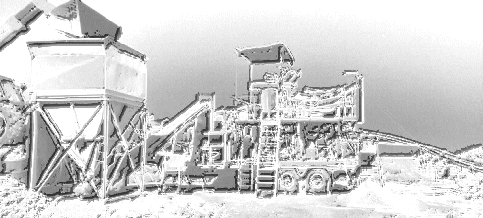
Introduction to Grade Estimation Methods
This topic is part of the Grade Estimation range of topics. The information contained in the following topics concentrates on the different methods of interpolating grades into the model cells using a range of processes available in your product. These articles focus primarily on univariate estimation, although some principles apply equally to the multivariate case.
There are four commands that deal specifically with standard/univariate grade estimation into a block model (advanced estimation uses a separate but similar process to ESTIMA: COKRIG).
All four commands use the same application code but have different interfaces and provide different sets of functions.
-
GRADE: this is the simplest command and has the least number of options. It is restricted to Nearest Neighbor (NN), Inverse Power of Distance (IPD) and Ordinary Kriging (OK) using a 1 or 2 structure spherical model variogram model. Only one grade can be estimated at a time. See GRADE.
-
ESTIMA: a multi-featured command allowing all options except Indicator Estimation. Multiple grades can be estimated using multi-structure variogram models of different types. The interface is the standard files, fields, parameters dialog. See ESTIMA Process
-
INDEST: this is similar to ESTIMA except that it only offers Indicator Estimation. It uses the standard files, fields, parameters dialog. See INDEST.
-
ESTIMATE: offers all the functionality of ESTIMA and INDEST (excluding unfolding) plus more through a tailored dialog. It includes the ability to save and restore search volume, estimation type and variogram model information through the use of parameter files. See ESTIMATE.
These commands require an input model to define the cell structure, and an input sample file to define the sample grades to be used for making the estimates. They then create an output model where the estimated grade is a field in the model file.
The Input Model
All estimation methods require an input prototype block model into which the sample grades are interpolated. Typically, the prototype model will already contain cells and subcells defining the geology, enabling values to be interpolated into the existing cell structure. However, if the prototype model is empty, and sufficient samples exist within the search volume, then cells and subcells are created.
A prototype model containing cells and sub-cells may also contain one or two classification fields, for example, rocktype, lithology, weathering profile, or fault block zone. If the same classification field(s) also exist in the input sample file, then zone control can be selected. This means, for example, that only samples that are rock type A would be used to estimate cells that are rock type A.
The Output Model
If the input model contains cells and sub-cells, then the output model will contain the same set of cells and sub-cells. It will also include additional fields corresponding to the grades that were estimated.
The Input Samples
The input sample file must contain the three coordinate fields X, Y and Z, and at least one grade field. This will often be a desurveyed drillhole file which may also contain classification fields, if zone control is to be selected.
Search Volume Parameters
A Search Volume is a 3D shape containing the samples to be used for the grade estimation, and is centered on the cell being estimated. The volume may be either a 3D ellipsoid or a cuboid. All methods require a search volume.
For GRADE, a single search volume is defined in the parameters tab, whereas the other commands (ESTIMA, ESTIMATE, INDEST) allow multiple search volumes which are stored in a Search Volume Parameter file. The ESTIMATE command provides specific dialogs to facilitate the definition, import and export of search volumes. Multiple search volumes allow different grades to be estimated with different search volumes.
Variogram Model Parameters
If kriging is selected as one of the estimation methods, then a variogram model must be defined. As for search volumes, GRADE allows a single model to be defined through the parameters tab, whereas ESTIMATE provides specific dialogs for definition, and import and export to and from the Variogram Model Parameter file. Variograms are calculated using the VGRAM command, and models fitted using VARFIT.
Estimation Type Parameters
It is necessary to provide a set of estimation parameters for each grade to be estimated. For GRADE with a single estimate these parameters are defined on the parameters tab. For the other processes, the parameters may be imported as an Estimation Parameter file. ESTIMATE provides dialogs to define and save these parameters. The parameters include the estimation method, the search volume reference number and estimation-method-specific data such as the power, if the Inverse Power of Distance method has been selected.
Related topics and activities

